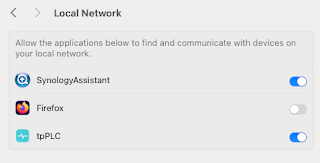Geeking in technology since 1985, with IBM Development, focused upon Docker and Kubernetes on the IBM Z LinuxONE platform In the words of Dr Cathy Ryan, "If you don't write it down, it never happened". To paraphrase one of my clients, "Every day is a school day". I do, I learn, I share. The postings on this site are my own and don’t necessarily represent IBM’s positions, strategies or opinions. Remember, YMMV https://infosec.exchange/@davehay
Tuesday, 30 June 2009
Error "ERROR: Invalid bundled JVM. Missing 'jvm' file" when attempting to install Domino 8.5 on Red Hat Enterprise Linux
Monday, 29 June 2009
Error "Failed to create event client" when trying to use Lotus Sametime Server 8.0.2 on Red Hat Enterprise Linux
Lotus Sametime and /etc/security/limits.conf on Red Hat Enterprise Linux
Copying files on Linux using SSH
SMTP task fails to start on Domino 8.5 on Red Hat Enterprise Linux 5.3
Sunday, 28 June 2009
Installing Lotus Domino 8.5 on Red Hat Enterprise Linux 5.3
Wednesday, 24 June 2009
New WebSphere Portal 6.1 Flash demo posted
Monday, 22 June 2009
DB2 not appearing to listen
as 5000x etc. ).
from installation to installation )
be well.
Friday, 19 June 2009
My next challenge - cloning
Automagically starting DB2 UDB on Linux - revisited
Problems with T2 ( and, no, I don't mean rogue cyborgs or airport terminal buildings )
Tuesday, 16 June 2009
Automagically starting DB2 UDB on Linux
Sunday, 14 June 2009
SQL0970N when running DB2SAMPL on Unix
Saturday, 13 June 2009
Forms Portal - Integrating Lotus Forms 3.5 and WebSphere Portal 6.1 together
Friday, 12 June 2009
Customising Finder in OSX
New from SNAPPS - PandaBear for Lotus Quickr
Thursday, 11 June 2009
From our lovely Lotus User Group friends ...
Lotus Technical Seminars One-day seminars to supercharge your Lotus skills
Tuesday, 9 June 2009
Solved - Sametime chat windows disappearing off the screen on OSX
I couldn't get at the little draggy pointer on the bottom right-hand corner of the window, and thus couldn't resize the window - this was very annoying as I couldn't see the status of chat recipients e.g. "So- and-so is typing", "Mr Thingy is off-line" etc. and also couldn't see whether the files I'd sent to someone via a chat were being received or not.
Thanks to the power of the intraweb, I was able to solve the problem, and it's quite obvious really - there are three little blobs on the top right-hand corner of any OSX window; red, amber and green. Red closes the window, amber minimises the window and green maximises the window.
I hit the green blob and, c'est voila, the chat window expanded to fill the entire screen, from where I can then resize it.
Obvious really ...
WebSphere Portlet Factory 6.1.2 - Support for Rational Application Developer and Rational Software Architect
Thursday, 4 June 2009
Case Study - The North Face - WebSphere Commerce, Lotus Web Content Management and Omnifind Discovery Edition together make a great website
Wednesday, 3 June 2009
Lotus Sametime Gateway Adds Integration with Microsoft Office Communications Server
Updated - here is the TechNote
Problems with Lotus Quickr Services for Lotus Domino 8.5 on upgrade/installation - Blank page or JavaScript error "Object expected" ...
WebSphere Portal - Moving from Standalone LDAP to Federated Repository
Monday, 1 June 2009
IBM WebSphere Portal Version 6.1 Reviewer's Guide
Saw this PDF document online whilst writing a response to a customer's Request for Information (RFI): -
Stefan Hepper: Achieve tighter integration between WebSphere Portal and Lotus Web Content Management
Note to self - Firefox and local connections
Whilst trying to hit my NAS from Firefox on my Mac, I kept seeing errors such as:- Unable to connect Firefox can’t establish a connection t...

-
Error "ldap_sasl_interactive_bind_s: Unknown authentication method (-6)" on a LDAPSearch command ...Whilst building my mega Connections / Domino / Portal / Quickr / Sametime / WCM environment recently, I was using the LDAPSearch command tha...
-
Another long story cut short, but I saw this: - curl: (58) unable to set private key file: 'dave.pem' type PEM from my Ansible...
-
Whilst trying to hit my NAS from Firefox on my Mac, I kept seeing errors such as:- Unable to connect Firefox can’t establish a connection t...
